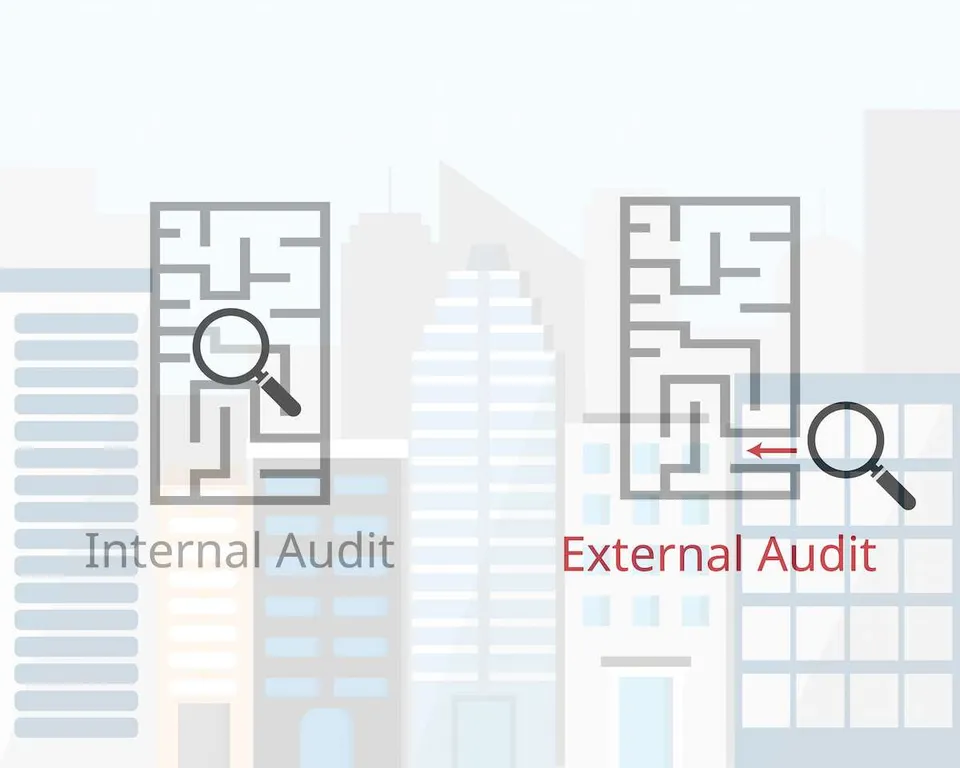Keeping a company’s financial statements in order facilitates ensuring compliance and avoiding hefty fines. Achieving sustainability requires firms to increase the accuracy of manual input and use workflow automation tools to expedite processes. In this guide, we will compare internal vs external audits and demonstrate how such checks empower enterprises to reach the set objectives.
While the processes serve different purposes, they should be considered together to showcase the value they can bring to organizations. Learning about the subtle differences between the procedures is the first step toward embracing modern governance practices. Such processes contribute to efficient resource optimization, fraud investigations, and risk management practices.
What is Internal Auditing?
The term refers to checking a firm’s inventory, transactions, and various activities. Its primary objective is to discover the areas that require improvement. Firms use it to analyze the supplies and fix issues causing disruptions and delays. Grasping the nuanced difference between internal and external audit is essential to understand how these approaches can be used to foster transparency and win stakeholder’s trust. The former prioritizes checking internal operations, while the latter focuses on financial data.
Professionals create detailed reports on a venture’s financial health, activities, and practices. The main goal is to provide an objective performance assessment and offer helpful insights to enhance accountability. Some people also wonder about ISO audit meaning, however, such procedures are necessary to check a venture’s compliance with specific standards.
Having an audit trail allows ventures to trace the chronology of events and understand how specific decisions were made. By organizing data, employees help auditors identify underlying patterns or unveil issues causing delays. Below, we have listed the key upsides of an internal audit:
- Improved decision-making: By discovering problems hindering growth, companies adjust strategies.
- Enhanced efficiency: Removing operational issues facilitates embracing result-yielding practices.
- Eliminate threats: Auditors analyze the potential consequences of the vulnerabilities they discover. It allows employees to take steps to reduce the negative impact of the issues.
- Achieve compliance: Aligning policies with existing standards and practices is essential to avoid penalties.
After taking a look at internal vs external audit procedures, it becomes noticeable that the former is quite expensive and can hinder a firm’s workflow. This is why many organizations avoid the step fearing to create a negative sentiment among employees. However, taking it is necessary for those who want to organize their accounting records.
What is External Auditing?
The term describes a complex procedure of examining financial statements to see whether they meet existing standards. An independent auditor checks whether reports contain actual data and creates a comprehensive overview of a venture’s potential. All publicly traded companies must undergo this process to provide documentation. The internal vs external audit contrast highlights the essential role of the latter for businesses seeking to minimize tax liability.
Even though private companies do not have to order such services regularly, some of them choose the procedure to strengthen their reputation and win consumers’ loyalty. In addition, an external audit is necessary for those who need to get a loan to secure financing. The task is performed by a professional who has no connection to the venture. It could be an experienced accountant or other specialist with relevant accreditation.
External audits are used for the following purposes:
- Enhance transparency: A seasoned auditor examines finances and confirms that the records and documents do not have any discrepancies. The result of such a check allows stakeholders to see whether they are investing in a trustworthy business.
- Tighten control: Overseeing processes and making subtle changes contributes to improving overall efficiency and productivity. Developing comprehensive internal policies makes it easier to undergo compliance audits without any issues.
- Improve a public image: Achieving high credibility requires hiring independent auditors who can examine data in documents and unveil issues with potentially disastrous effects.
Even though internal and external auditing practices demonstrate high efficiency, a firm should be ready to invest in fostering accountability. Process optimization may require spending a lot of time and funds on SOX 404B audits and other similar procedures that involve scrutinizing financial statements.
While corporations can afford to hire top industry professionals to check their reports, invoices, and statements, nonprofits may find it arduous and expensive to go through the process. Negative results of an audit conducted by a certified public accountant (CPA) can stain a company’s reputation and lead to damaging media coverage. Nevertheless, detecting reporting issues in time is the only way to embrace the best practices and meet industry requirements.
Key Differences Between Internal and External Audits
Recognizing what makes each procedure stand out enables enterprises to choose the most suitable option depending on their current needs. While both of them focus on the consistency of financial reporting, they are conducted differently. We have created a table to highlight the unique characteristics of both approaches.
| Aspect | Internal audits | External audits |
| The professionals tasked with checking a firm’s activities | A certified internal auditor or a dedicated team created to discover the way to optimize operations and mitigate threats. | Independent professionals who conduct objective investigations and offer assurance to investors. |
| The main scope of application | A department with convoluted processes or a specific area requiring improvement. | All relevant data that allows the specialists to verify a firm’s budget records. |
| Objective | Accurate assessment of current performance to discover routines that can be streamlined. | Examination of financial statements to confirm they contain actual data. |
| Appointment | Internal auditors are assigned by a firm’s managers. | External auditors are chosen based on shareholders’ wishes. |
| Report format | No strict requirements. | Specific formats for reports and letters. |
| Communication | Professionals are encouraged to discuss processes with employees. | The investigation is provided independently to provide an objective evaluation and eliminate biases. |
| Report usage | Managers analyze the findings to make informed decisions. | Investors and lenders consider reports to decide whether to provide funding |
| Main focus | Faulty practices hindering positive developments. | Inaccuracies in financial statements. |
| Timing | On demand | Annually |
As this internal vs external audit table demonstrates, the procedures share some similarities. However, only large companies regularly use both types of checks to maintain financial health and scrutinize their records.
When to Use Internal Audits
Businesses seeking to enhance the efficiency and scope of their operations use the procedure to tighten control over internal processes. Top managers typically embrace this approach when they want to invent countermeasures to protect a venture from threats.
A brief internal vs external audit analysis shows that the former is crucial for implementing reliable safety mechanisms and making weighted decisions based on actual data. Besides, it can be used as a preparation stage before thorough checks are conducted by third-party professionals.
The information collected during this process empowers ventures to develop new solutions and counter existing threats. Managers utilize the insights to ensure stakeholders’ support.
When to Opt for an External Audit
Initiating the process is necessary if a firm wants to gain stakeholders’ support, find new investment sources, and strengthen its market position. Building a positive brand image also requires maintaining accountability and fostering transparency.
When considering internal vs external audit, publicly traded companies should choose the latter. This option is also necessary for nonprofits that want to find financial funding. Organizations that have to submit SOC reports are also obliged to undergo the procedure. Willingness to follow the rules demonstrates that a company is a reliable partner. It makes it easier to get the support of investors and governmental bodies.
Conclusion
This internal vs external audit juxtaposition demonstrates the pivotal role of both procedures in enhancing financial stability. Even though their goals and application areas are dissimilar, these procedures bring many benefits. Helping organizations streamline operations, improve management approaches, and integrate mechanisms mitigating threats, professionals assist them in achieving strategic objectives. The difference between internal and external auditors lies in the fact that their scope of operation varies. BooksTime has a team of specialists who recognize the significance of both roles and know how to enhance a venture’s financial integrity. They help clients choose the right procedure and successfully finalize audits by embracing efficient bookkeeping practices. Get in touch with our professionals and learn how to keep your records free of mistakes to avoid hefty fines.


















